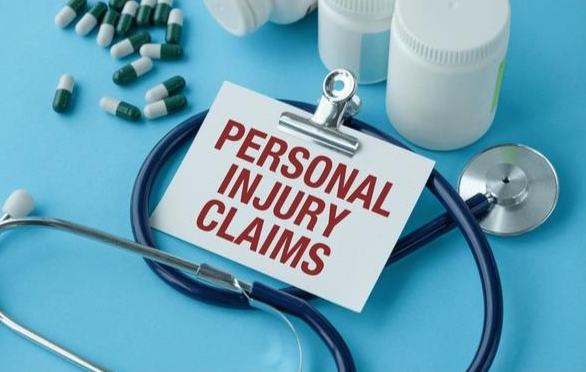A personal injury claim is a legal proceeding that gives an individual who has been injured by the negligence of another the opportunity to recover damages (money). Personal injury claims cover a wide variety of injuries and accidents.
A personal injury FAQ can be very helpful for those who are new to the process of filing a claim. However, to get an idea of how these kinds of cases typically arise, it might be worthwhile to look at the most common personal injury claims filed.
Motor Vehicle Accident Claims
Motor vehicle accidents and other traffic accident claims are the most common source of personal injury claims in the United States. The circumstances of these claims often involve cars, motorcycles, trucks, cyclists, and pedestrians.
Claims need to show one party was negligent, for example, speeding, texting while driving, or running a red light, in order to prove fault. Compensation may include the cost of medical treatment, lost wages while the claimant recovered, and damages from the injury, including pain and suffering.
Because the severity of the accidents varies, some claims are settled in a matter of weeks, while others will go through litigation that may take over a year. Nevertheless, the underlying theme is that the claimant seeks to be financially whole after an unexpected collision.
Slip and Fall Claims
Slip and fall cases are a type of premises liability claim. A person is entitled to the right to bring a claim when an owner of property fails to reasonably ensure that the property is safe.
Many of these accidents are caused by hazards you find at the scene of the accident, such as wet surfaces, places where there are missing steps, poor or inadequate lighting, uneven walking surfaces, etc.
In most cases, victims must prove that the property owner knew or should have known of the hazardous situation and didn’t correct it. Falls can cause serious injuries like fractures, concussions, etc.
Medical Malpractice Claims
Medical malpractice is defined as negligence by a health care provider that causes harm to a patient. Types of malpractice include sending a patient to the wrong specialist, causing medical mistakes during a procedure, and making errors concerning the medications prescribed in a patient’s chart or treatment plan.
Proving medical malpractice is difficult and typically requires expert testimony to the medically acceptable standard of care where the health care provider’s care fell below that standard. Medical malpractice can cause serious consequences to the victim and can involve an illness that already exists being made worse or a permanent disability.
Workplace Accident Claims
Injuries can happen in all workplaces, especially in construction, manufacturing, or warehouses. While the vast majority of employees will depend on the employer’s workers’ compensation, there may be occasions where a worker has a right to make a claim against a third party, especially if defective equipment contributed to the worker’s injury.
There are also common injuries sustained at the workplace, such as falls from ladders, machine breakdowns, or repetitive traumatic injuries. Even office workers may make claims for problems like carpal tunnel syndrome. These claims show the importance of safe working environments and that employers and others need to minimize risks wherever necessary.
Product Liability Claims
A product liability claim can be made if a consumer product causes injury. There are three ways a defect can occur: faulty design, faulty manufacture, or faulty warning and instructions.
These claims can range from faulty parts on vehicles to defective children’s toys. In general, manufacturers, distributors, or retailers are liable for harm. Product liability claims create compensation for injured victims and create public awareness that companies must strive for higher safety standards.
Wrongful Death Claims
A wrongful death claim is created when negligence results in death. Surviving family members, such as a spouse, children, or close family member, can make the claim.
Types of damages usually include lost income, loss of companionship, and funeral expenses. Although no amount of money can replace a person’s life, a wrongful death claim can create a financial safety net while holding the negligent individual or company accountable in a very traumatic situation.
Why Knowing These Claims Is Important
Many situations fall under the umbrella of personal injury law, but as outlined above, specific claims are most often seen. The distinction between these claims helps people understand their rights in the event of an accident or injury.
Whether it is a car crash, a slip and fall in the workplace, or even medical malpractice, knowing these possible claim types helps illustrate the impact of the law in providing fairness. Awareness is the first step in protecting oneself when harm occurs in an unexpected situation.
Key Takeaways
- Motor vehicle accidents represent the majority of personal injury claims.
- Slip and fall cases usually involve unsafe circumstances on property owned.
- Medical malpractice is the failure to provide the proper level of care.
- Workplace injuries can involve either workers’ compensation or third-party liability claims.
- Defects in products and product liability claims exist.
- Wrongful death claims provide compensation for family members for the loss of a human life caused by negligence.



Comments